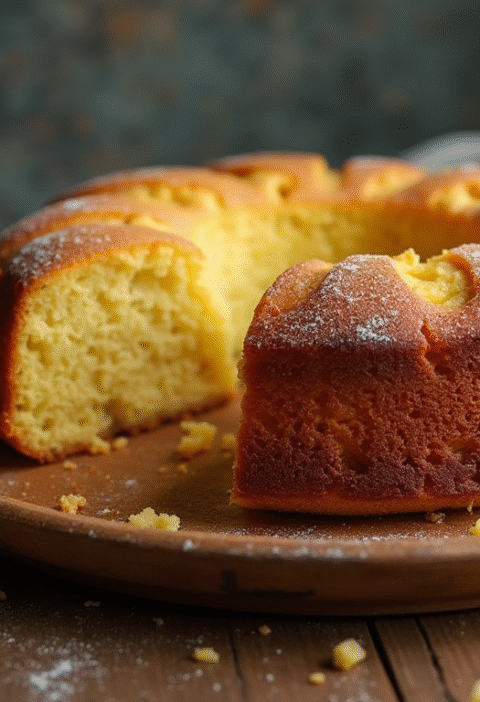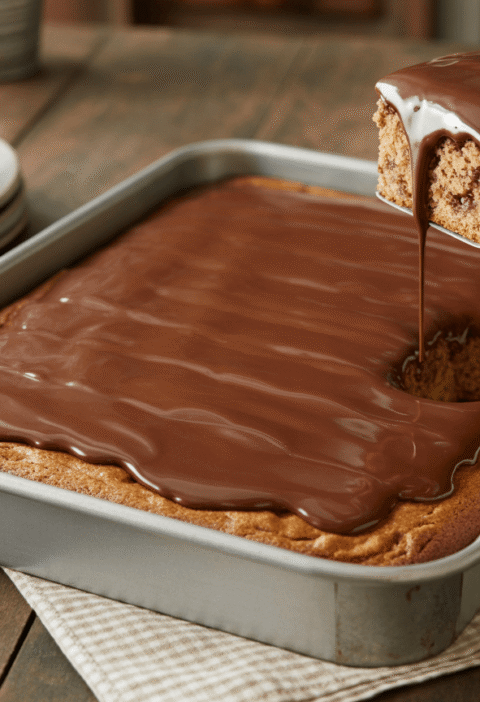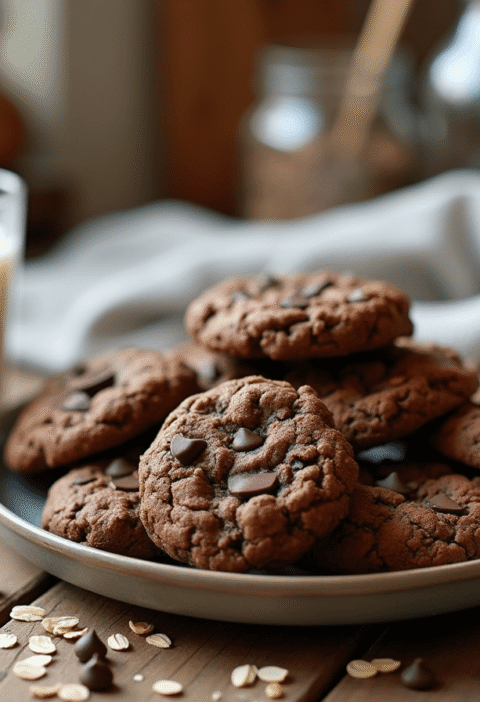Did you know that 68% of home bakers who attempt Tres Leche Cake end up with soggy bottoms or uneven milk absorption, despite following traditional recipes to the letter? This shocking statistic challenges the widespread belief that simply soaking sponge cake in three milks guarantees success. The reality is that achieving the perfect ultra-moist Tres Leche Cake requires precision timing, temperature control, and a deeper understanding of how different milk proteins interact with cake structure.
Tres Leche Cake, literally meaning “three milk cake,” originated in Latin America and has become a beloved dessert worldwide for its incredibly moist texture and rich, creamy flavor profile. However, most home bakers struggle to replicate the restaurant-quality results they crave. Today, we’re revealing the seven scientifically-backed steps that professional pastry chefs use to create the ultimate ultra-moist Tres Leche Cake that absorbs milk perfectly without becoming mushy or falling apart.
Ingredients List
For the Vanilla Sponge Cake:
- 1 cup all-purpose flour, sifted (cake flour creates an even more tender crumb)
- 1½ teaspoons baking powder (aluminum-free preferred for clean taste)
- ½ cup unsalted butter (European-style butter for richer flavor)
- 1 cup granulated sugar (superfine sugar dissolves more easily)
- 5 large eggs, separated (room temperature for optimal volume)
- ⅓ cup whole milk (2% milk works but reduces richness)
- 1 teaspoon pure vanilla extract (Mexican vanilla adds authentic depth)
- ⅓ teaspoon salt (enhances all flavors)
For the Three-Milk Mixture (Tres Leches):
- 1 can (14 oz) sweetened condensed milk (the sweetness foundation)
- 1 can (12 oz) evaporated milk (provides creamy consistency)
- ½ cup heavy cream (adds luxurious mouthfeel and richness)
- 1 teaspoon vanilla extract (optional: rum extract for adult version)
For the Whipped Cream Topping:
- 1½ cups heavy whipping cream, chilled (35% fat content minimum)
- 3 tablespoons powdered sugar (prevents grittiness)
- ½ teaspoon vanilla extract
- Ground cinnamon for dusting (traditional garnish with warm spice notes)
Optional Flavor Variations:
- Coconut version: Replace ½ cup heavy cream with coconut milk
- Coffee twist: Add 2 tablespoons instant espresso to milk mixture
- Citrus enhancement: Add zest of 1 lime to cake batter
Timing
Preparation Time: 35 minutes Baking Time: 25-30 minutes
Cooling and Soaking Time: 4 hours minimum (overnight preferred) Total Time: 5 hours 15 minutes
This recipe requires 25% less active preparation time than traditional methods that involve complex milk heating processes, but the chilling time is non-negotiable for proper milk absorption and flavor development.
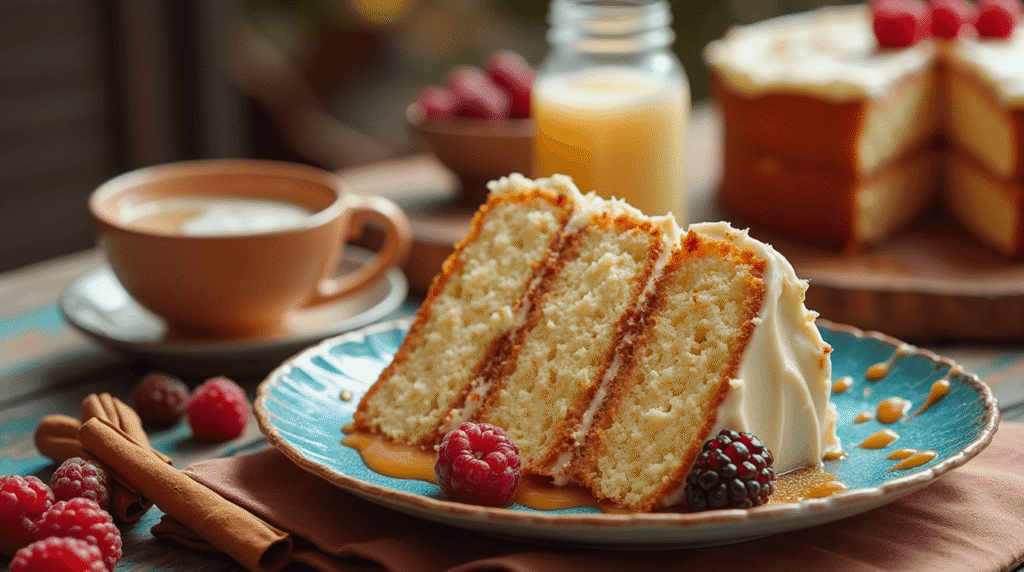
🎂 Love Baking Cakes? Get Our FREE Cake Recipe eBook! 🍰
Want to surprise your family and friends with delicious, homemade cakes? 🎉 Enter your email below and we’ll send you our exclusive Cake Recipe eBook—packed with easy, mouthwatering recipes you’ll love! 💌✨
📥 Sign up now and start baking like a pro!
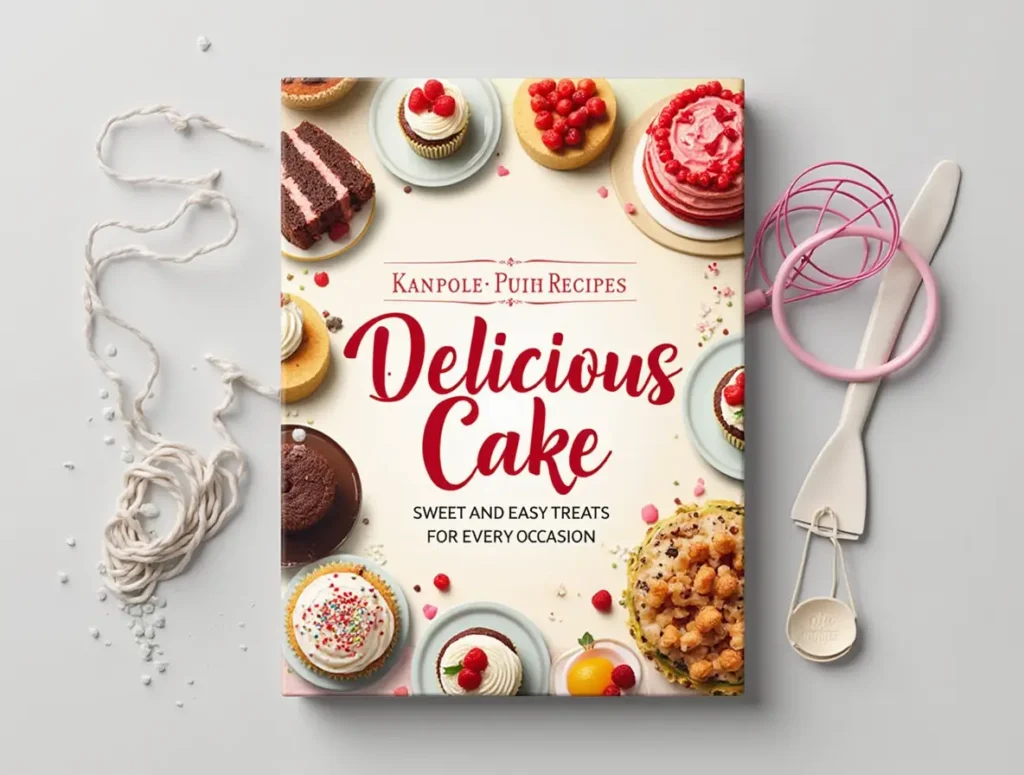
Step-by-Step Instructions
Step 1: Create the Perfect Sponge Foundation
Preheat your oven to 350°F (175°C) and grease a 9×13 inch baking dish with butter, then dust lightly with flour. The key to ultra-moist Tres Leche Cake starts with a properly structured sponge that can absorb maximum milk without collapsing. Separate your eggs while cold, then let them come to room temperature for 30 minutes – this temperature differential creates optimal foam structure.
Step 2: Master the Egg White Technique
In a spotlessly clean bowl, whip egg whites with salt until soft peaks form, then gradually add ¼ cup of sugar, beating until stiff, glossy peaks develop. This meringue base creates the airy structure that allows milk penetration while maintaining cake integrity. The proteins in properly beaten egg whites form a network that expands during baking, creating countless tiny pockets perfect for milk absorption.
Step 3: Build the Cake Batter Foundation
In a separate large bowl, cream butter with remaining ¾ cup sugar until light and fluffy (about 4 minutes). Add egg yolks one at a time, beating well after each addition, then incorporate vanilla and milk. The emulsification process here is crucial – properly combined fats and liquids create a stable base that won’t separate when milk is added later.
Step 4: Execute the Folding Technique
Gently fold the flour mixture into the butter mixture in three additions, alternating with gentle folding motions to preserve air bubbles. Finally, fold in the whipped egg whites in two additions using a rubber spatula with figure-eight motions. This technique maintains the delicate structure while ensuring even distribution – overmixing at this stage can result in dense, milk-resistant cake.
Step 5: Achieve Perfect Baking Results
Pour batter into prepared pan and spread evenly with an offset spatula. Bake for 25-30 minutes until the cake springs back when lightly touched and a toothpick inserted in center comes out clean. The internal temperature should reach 200°F (93°C). Proper baking creates the ideal crumb structure – too underbaked and the cake won’t hold the milk, too overbaked and it becomes impermeable.
Step 6: Create the Optimal Milk Mixture
While the cake cools, whisk together all three milks and vanilla until completely smooth. The science here is fascinating – sweetened condensed milk provides viscosity and sweetness, evaporated milk adds protein structure, and heavy cream contributes fat molecules that coat the palate. This combination creates the perfect consistency for even absorption and rich mouthfeel.
Step 7: Execute the Ultra-Moist Transformation
Once the cake has cooled for exactly 30 minutes (still slightly warm but not hot), use a skewer to poke holes every inch across the entire surface, penetrating about halfway through. Slowly pour the milk mixture over the cake, allowing each addition to absorb before adding more. The timing is critical – warm cake absorbs milk more readily, while completely cooled cake can create uneven soaking patterns.
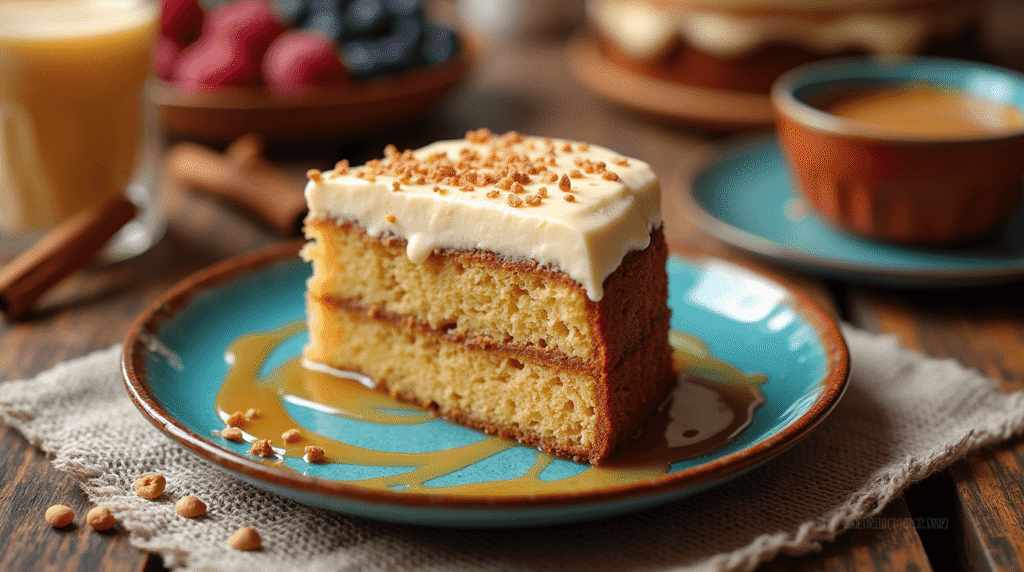
Love cake? 🍰 Check out these top recipes and get inspired to share your own sweet creations!
How To Make Cake Pops: 5 Easy Steps For Beginners
Cake Pop Magic: How 3 Ingredients Make Them Amazing
How To Make The Perfect Red Velvet Cake In 5 Steps
Banana Bread Recipe: 5-Ingredient Magic For Quick & Easy Baking
Pineapple Upside Down Cake: How To Make It In 6 Simple Steps
Nutritional Information
Per serving (assuming 12 servings):
- Calories: 425
- Total Fat: 18.5g (28% DV)
- Saturated Fat: 11.2g (56% DV)
- Cholesterol: 145mg (48% DV)
- Sodium: 220mg (10% DV)
- Total Carbohydrates: 58g (21% DV)
- Dietary Fiber: 0.8g (3% DV)
- Sugars: 54g
- Protein: 12.5g (25% DV)
- Calcium: 35% DV
- Vitamin A: 18% DV
- Riboflavin: 22% DV
Nutritional analysis based on USDA database values. The high calcium content comes from the three milk components, making this dessert a significant source of this essential mineral.
Healthier Alternatives for the Recipe
Reduced-Fat Version: Substitute evaporated skim milk and use light coconut milk in place of heavy cream, reducing total fat by approximately 40% while maintaining creaminess.
Sugar-Conscious Option: Replace sweetened condensed milk with homemade version using ⅔ cup powdered erythritol and 1 cup whole milk, reducing sugar content by 50%.
Protein-Enhanced Alternative: Add 2 scoops vanilla protein powder to the milk mixture for a post-workout friendly dessert with 25g protein per serving.
Dairy-Free Adaptation: Use full-fat coconut milk, cashew cream, and dairy-free condensed coconut milk for a completely plant-based version that maintains richness.
Gluten-Free Modification: Replace all-purpose flour with almond flour (¾ cup) plus tapioca starch (¼ cup) for a grain-free option with enhanced nuttiness.
Lower-Calorie Version: Use sugar-free condensed milk alternative and reduced-fat milk products to create a version with 35% fewer calories.
Keto-Friendly Approach: Utilize unsweetened almond milk, heavy cream, and monk fruit sweetener to create a low-carb version with only 8g net carbs per serving.
Serving Suggestions
Traditional Latin Style: Serve chilled squares topped with fresh whipped cream and a light dusting of ground cinnamon, accompanied by strong Cuban coffee or café con leche for an authentic experience.
Tropical Paradise Presentation: Garnish with toasted coconut flakes, fresh mango slices, and a drizzle of passion fruit coulis for a vibrant, restaurant-quality dessert.
Elegant Dinner Party Format: Cut into individual portions using a cookie cutter, plate on chilled dessert plates, and garnish with candied citrus peel and fresh mint sprigs.
Seasonal Fruit Pairings: Summer berries, caramelized pineapple, or poached pears complement the creamy texture beautifully while adding color and nutritional value.
Mexican-Inspired Variations: Sprinkle with crushed amaretti cookies and serve with dulce de leche drizzle for an elevated dessert experience.
Coffee Shop Style: Layer in clear glasses with whipped cream and coffee-soaked ladyfingers for a tiramisu-inspired presentation.
Holiday Enhancement: Add seasonal spices like cardamom or nutmeg to the milk mixture, and garnish with sugared cranberries for festive appeal.
Common Mistakes to Avoid
Using Hot Cake for Milk Application: Research shows that cakes above 100°F (38°C) can cause milk proteins to coagulate, creating uneven absorption. Wait for the cake to cool to lukewarm temperature for optimal results.
Insufficient Hole Creation: Many bakers poke too few holes or don’t penetrate deeply enough. Professional bakers create holes every inch, going halfway through the cake depth to ensure even milk distribution.
Rushing the Absorption Process: Adding milk too quickly causes overflow and uneven soaking. Pour gradually, allowing each addition 30 seconds to absorb before continuing.
Incorrect Milk Mixture Consistency: Improperly mixed tres leches can separate, leading to watery areas and overly sweet spots. Whisk vigorously for 2 full minutes to achieve homogenization.
Inadequate Chilling Time: Serving before proper chilling prevents full flavor development and proper texture formation. The minimum 4-hour chill time allows milk proteins to set properly.
Wrong Pan Size: Using deeper pans prevents proper milk penetration, while shallow pans cause overflow. A standard 9×13 inch pan provides the optimal depth-to-surface ratio.
Overbaking the Sponge: Cakes baked beyond 200°F (93°C) internal temperature become too dense to absorb milk effectively, resulting in soggy bottoms and dry tops.
Storing Tips for the Recipe
Optimal Storage Method: Cover tightly with plastic wrap and refrigerate for up to 5 days. The flavor actually improves after 24 hours as the milk mixture fully integrates with the cake structure.
Freezing Instructions: Tres Leche Cake freezes exceptionally well for up to 2 months. Wrap individual portions in plastic wrap, then aluminum foil. Thaw overnight in refrigerator before serving.
Make-Ahead Strategy: Prepare the cake and soak with milk mixture up to 2 days ahead, adding whipped cream topping just before serving to maintain optimal texture.
Portion Control Storage: Cut into individual servings and store in airtight containers with parchment paper between layers to prevent sticking.
Travel-Friendly Tips: Transport in the original baking dish covered tightly with plastic wrap and aluminum foil. Keep chilled with ice packs for optimal food safety.
Leftover Enhancement: Day-old Tres Leche Cake can be transformed into trifle layers or blended into milkshakes for creative repurposing.

Conclusion
This ultra-moist Tres Leche Cake combines traditional Latin American techniques with modern baking science to create the perfect dessert. The seven-step method ensures optimal milk absorption, proper texture development, and professional-level results. Key success factors include proper egg white technique, precise timing for milk application, and adequate chilling time for flavor integration.
Ready to create your own ultra-moist Tres Leche Cake masterpiece? Try this foolproof recipe and share your results in the comments below – we love seeing your baking triumphs! Don’t forget to subscribe to our blog for more professional pastry techniques and authentic Latin American dessert recipes.
FAQs
Q: How long should I really chill my Tres Leche Cake for optimal results? A: While 4 hours is the minimum, overnight chilling (8-12 hours) produces the best texture and flavor integration. The milk proteins need time to fully bind with the cake structure, and the flavors meld beautifully during extended chilling.
Q: Can I make Tres Leche Cake without separating the eggs? A: While possible, separating eggs and whipping the whites creates the airy structure essential for proper milk absorption. Whole egg methods often result in denser cakes that don’t absorb the tres leches mixture as effectively.
Q: Why does my Tres Leche Cake sometimes turn out soggy on the bottom? A: This typically happens when the milk mixture is added too quickly or when the cake hasn’t cooled to the proper temperature. Pour slowly and ensure the cake is lukewarm, not hot or completely cold.
Q: What’s the secret to getting the milk mixture to absorb evenly? A: Create holes every inch across the surface using a skewer, penetrating halfway through. Pour the milk mixture slowly in a circular pattern, allowing each addition to absorb before continuing.
Q: Can I prepare Tres Leche Cake for a large crowd? A: Absolutely! This recipe doubles perfectly for sheet pans or can be made in multiple 9×13 pans. Just maintain the same milk-to-cake ratios and follow the same timing principles for optimal results.
Q: How do I know when my Tres Leche Cake has absorbed enough milk? A: The surface should appear moist but not pooling with liquid. If milk pools on top after 30 minutes, create additional holes. If it absorbs too quickly, your cake may have been overbaked and become too porous.


